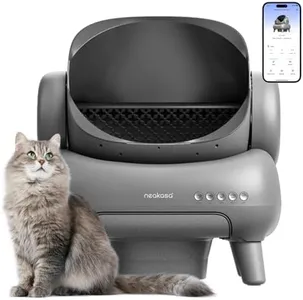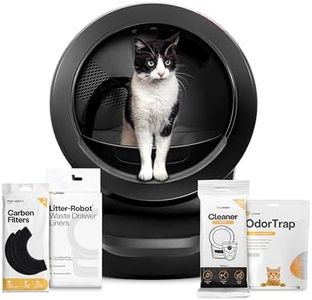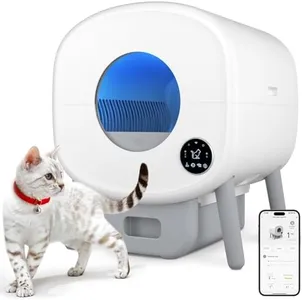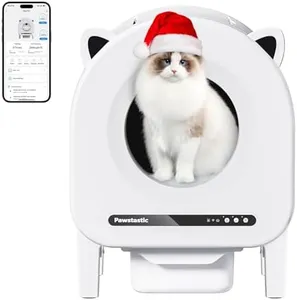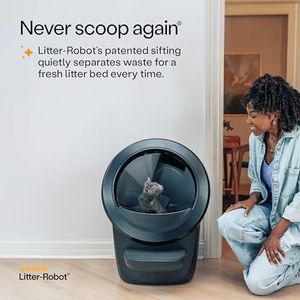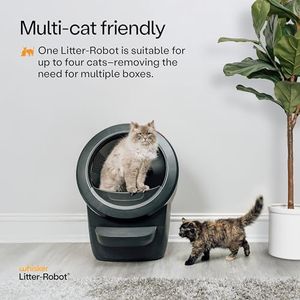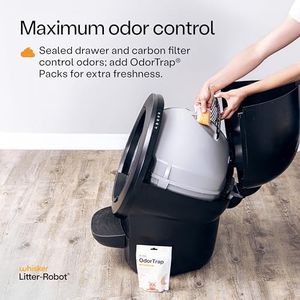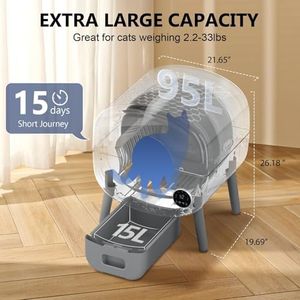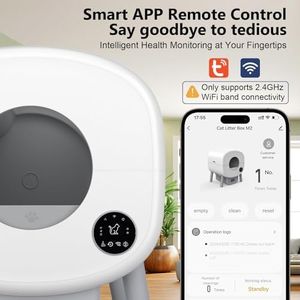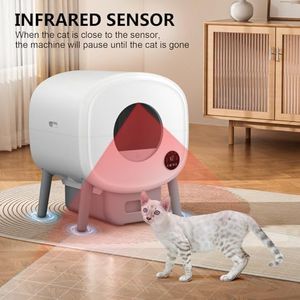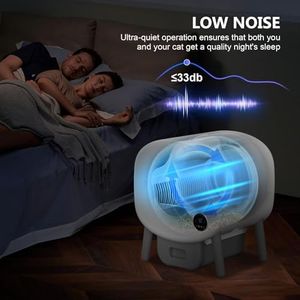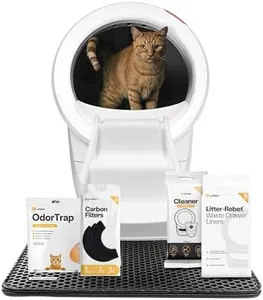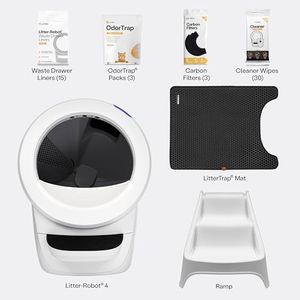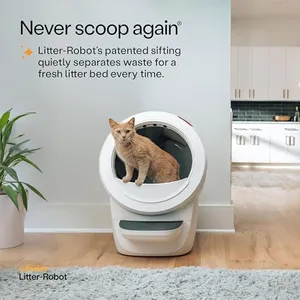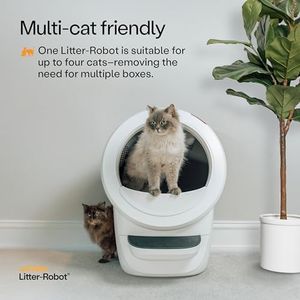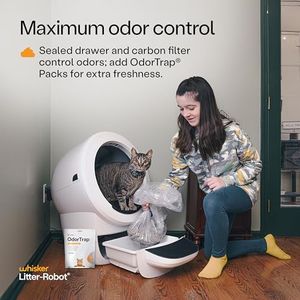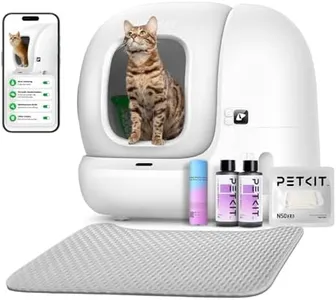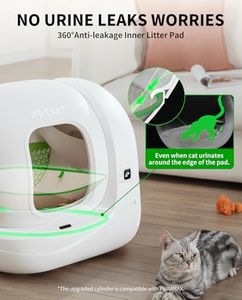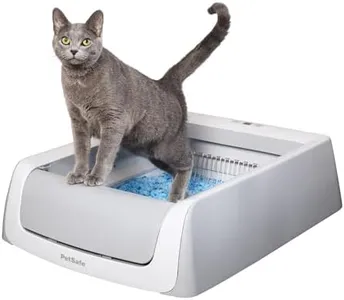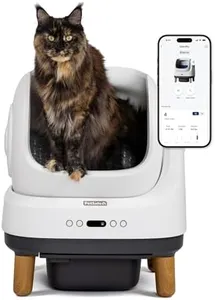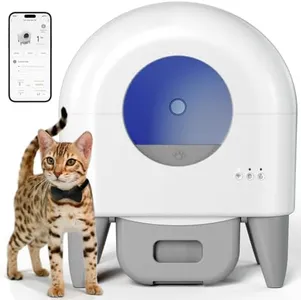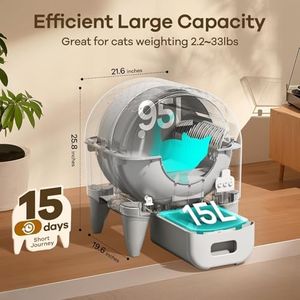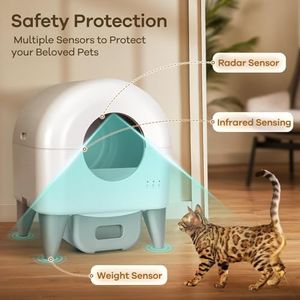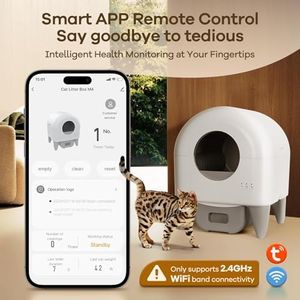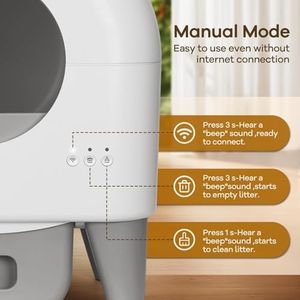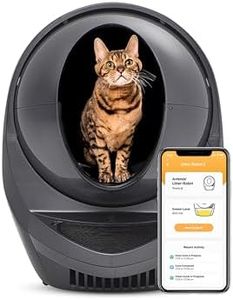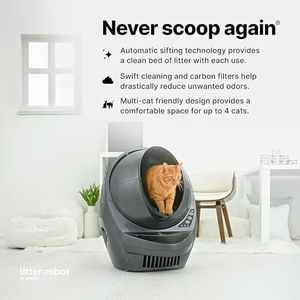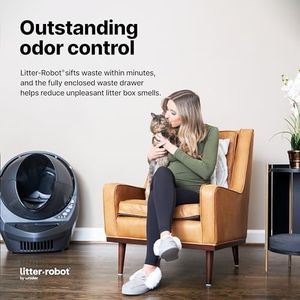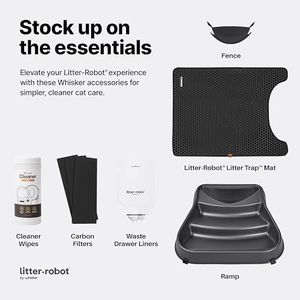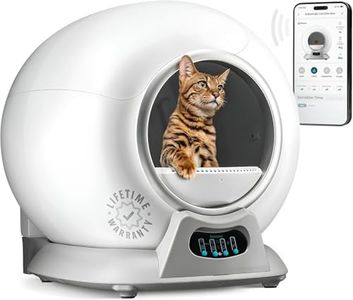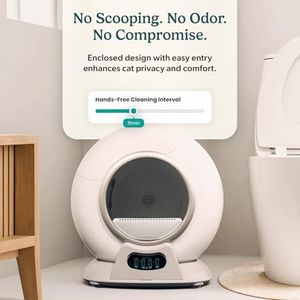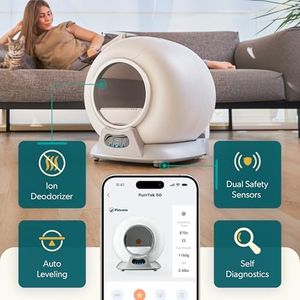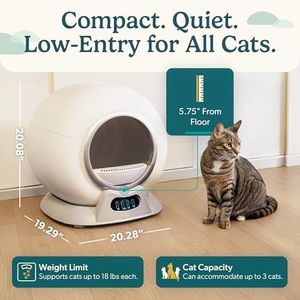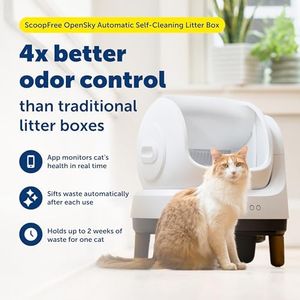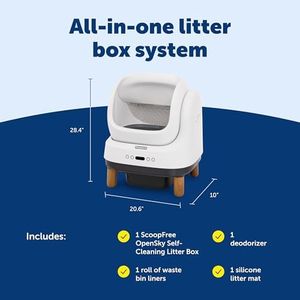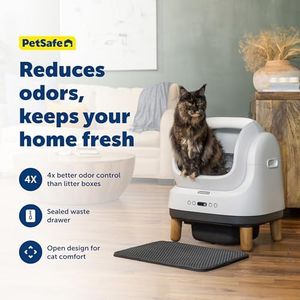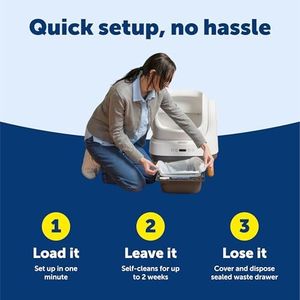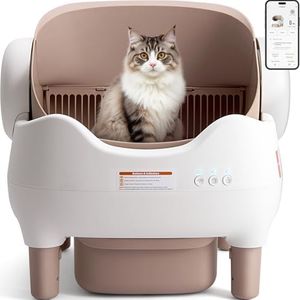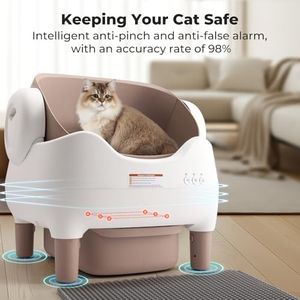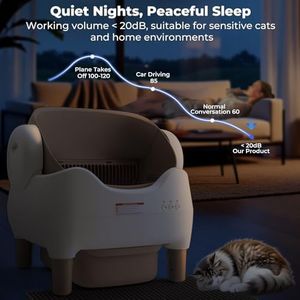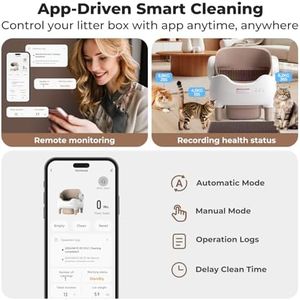10 Best Self Cleaning Litter Boxes 2025 in the United States
Winner
Neakasa M1 Open-Top Self Cleaning Cat Litter Box, Automatic Cat Litter Box with APP Control, Odor-Free Waste Disposal Includes Trash Bags
The Neakasa M1 Open-Top Self Cleaning Cat Litter Box offers a range of features designed to make life easier for cat owners and more comfortable for cats. The open-top design is one of its standout features, providing ample space and easy access, especially for larger cats. This design helps to alleviate common problems associated with traditional litter boxes, such as bad odors and cramped spaces, making it more appealing to cats. Its large capacity is also a plus, allowing for up to 14 days of maintenance-free operation, which is great for busy owners or those who travel frequently.
Most important from
3087 reviews
Litter-Robot 4 Supply Bundle by Whisker, Black - Automatic, Self-Cleaning Cat Litter Box, Includes Litter-Robot 4, 3 OdorTrap Refills, 10 Liners, 30 Cleaner Wipes, & 2 Carbon Filters
The Litter-Robot 4 Supply Bundle by Whisker is a well-designed automatic self-cleaning litter box that aims to make cat care easier by eliminating the need for manual scooping. It uses a patented sifting process to separate waste from clean litter, which reduces odors significantly thanks to included OdorTrap packs and carbon filters. This model supports any clumping litter, offering flexibility in choice. It can handle up to four cats that weigh at least 3 pounds each, making it suitable for multi-cat households. The waste disposal system is user-friendly—the waste collects in a drawer lined with disposable liners, which you just need to empty when full. The size is medium and fairly large (27 x 24.25 x 29.5 inches), so it needs a decent amount of space, and it weighs 24 pounds, which means it’s stable but not easily portable.
Most important from
692 reviews
Cumrige Self Cleaning Litter Box, Large Capacity Automatic Cat Litter Box Self Cleaning for Cats, App Control,Safety Protection, 2 Roll Garbage Bags,White & Grey
The Cumrige Self Cleaning Litter Box is designed for cat owners looking for convenience and hygiene. One of its standout features is the large 95L roller capacity, which accommodates multiple cats and lasts up to 15 days before needing waste disposal. This is particularly beneficial for busy pet owners or those who travel frequently. The safety sensors are a thoughtful addition, ensuring that the cleaning cycle pauses if your cat is detected, which helps keep your pet safe and comfortable.
Most important from
2091 reviews
Top 10 Best Self Cleaning Litter Boxes 2025 in the United States
Winner
Neakasa M1 Open-Top Self Cleaning Cat Litter Box, Automatic Cat Litter Box with APP Control, Odor-Free Waste Disposal Includes Trash Bags
Neakasa M1 Open-Top Self Cleaning Cat Litter Box, Automatic Cat Litter Box with APP Control, Odor-Free Waste Disposal Includes Trash Bags
Chosen by 1265 this week
Litter-Robot 4 Supply Bundle by Whisker, Black - Automatic, Self-Cleaning Cat Litter Box, Includes Litter-Robot 4, 3 OdorTrap Refills, 10 Liners, 30 Cleaner Wipes, & 2 Carbon Filters
Litter-Robot 4 Supply Bundle by Whisker, Black - Automatic, Self-Cleaning Cat Litter Box, Includes Litter-Robot 4, 3 OdorTrap Refills, 10 Liners, 30 Cleaner Wipes, & 2 Carbon Filters
Cumrige Self Cleaning Litter Box, Large Capacity Automatic Cat Litter Box Self Cleaning for Cats, App Control,Safety Protection, 2 Roll Garbage Bags,White & Grey
Cumrige Self Cleaning Litter Box, Large Capacity Automatic Cat Litter Box Self Cleaning for Cats, App Control,Safety Protection, 2 Roll Garbage Bags,White & Grey
Litter-Robot 4 Supply & Accessory Bundle by Whisker, White- Automatic Self-Cleaning Cat Litter Box, Includes Litter-Robot 4, Ramp, Mat, 3 OdorTrap Packs, 10 Liners, 30 Wipes, & 2 Carbon Filters
Litter-Robot 4 Supply & Accessory Bundle by Whisker, White- Automatic Self-Cleaning Cat Litter Box, Includes Litter-Robot 4, Ramp, Mat, 3 OdorTrap Packs, 10 Liners, 30 Wipes, & 2 Carbon Filters
PETKIT PuraMax 2 Automatic Self Cleaning Litter Box, Anti-Leakage Multi-Cat Compatible Smart Cats Litter Box, Safety Sensors App Control Include Triple Odor Removal Litter Mat Trash Bags
PETKIT PuraMax 2 Automatic Self Cleaning Litter Box, Anti-Leakage Multi-Cat Compatible Smart Cats Litter Box, Safety Sensors App Control Include Triple Odor Removal Litter Mat Trash Bags
Fumoi Self Cleaning Litter Box, Automatic Cat Litter Box Self Cleaning Large Capacity for Multiple Cats, App Control with Safety Sensors, Removable Washable Liner,2 Rolls Garbage Bags,Grey
Fumoi Self Cleaning Litter Box, Automatic Cat Litter Box Self Cleaning Large Capacity for Multiple Cats, App Control with Safety Sensors, Removable Washable Liner,2 Rolls Garbage Bags,Grey
Litter-Robot 3 Connect by Whisker, Grey - Automatic, Self-Cleaning Cat Litter Box, Helps Reduce Litter Box Odors, Works with Almost Any Clumping Litter, WhiskerCare 1-Year Warranty
Litter-Robot 3 Connect by Whisker, Grey - Automatic, Self-Cleaning Cat Litter Box, Helps Reduce Litter Box Odors, Works with Almost Any Clumping Litter, WhiskerCare 1-Year Warranty
PetCove Self Cleaning Automatic Litter Box for Multi cat - XL Capacity/Quiet Operation/Odor Control/Anti-Pinch Safety/Easy App Control with Ultra Fast 5 GHz Wi-Fi - Includes Litter Bag Liners
PetCove Self Cleaning Automatic Litter Box for Multi cat - XL Capacity/Quiet Operation/Odor Control/Anti-Pinch Safety/Easy App Control with Ultra Fast 5 GHz Wi-Fi - Includes Litter Bag Liners
PetSafe ScoopFree OpenSky Automatic Self-Cleaning Cat Litter Box - Hands-Free Cleaning - Odor Control Litter System - App Controlled with Health Monitoring - Multi-Cat Compatible
PetSafe ScoopFree OpenSky Automatic Self-Cleaning Cat Litter Box - Hands-Free Cleaning - Odor Control Litter System - App Controlled with Health Monitoring - Multi-Cat Compatible
KITPLUS Self Cleaning Litter Box, Automatic Cat Litter Box with APP Control, Odor-Free Waste Disposal Includes Trash Bags, Large Waste Bin, Open-Top, for Multiple Cats
KITPLUS Self Cleaning Litter Box, Automatic Cat Litter Box with APP Control, Odor-Free Waste Disposal Includes Trash Bags, Large Waste Bin, Open-Top, for Multiple Cats
Our technology thoroughly searches through the online shopping world, reviewing hundreds of sites. We then process and analyze this information, updating in real-time to bring you the latest top-rated products. This way, you always get the best and most current options available.

